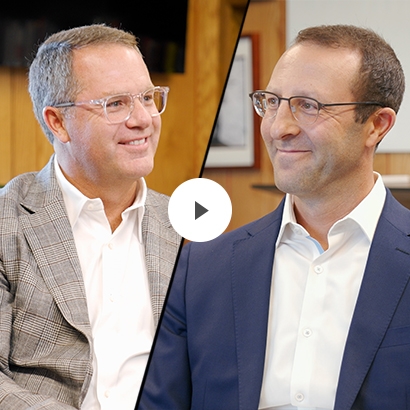Put away your stagflation playbook – this is not the 1970s.
Mike Wilson, Morgan Stanley’s Chief Investment Officer and Chief US Equity Strategist presented to clients in Adelaide at the end of November. The presentation was particularly timely given the recent release of the 2023 outlook by the Global Investment Committee (GIC). As always, Wilson was incredibly insightful and covered a lot of ground. One of the more interesting aspects of the presentation was his view that inflation is going to be more volatile going forward.
1940s, not 1970s
Morgan Stanley’s thesis on inflation is that we are headed into a period that has parallels with the 1940s. This is a thesis we have had for a long time – long before the pandemic – and is out of step with many other commentators who believe we are headed towards 1970s style stagflation.
Like the 1940s, we have had very low interest rates for a very long time. We believe this is leading us into a boom-bust cycle for inflation.
Demand-driven, not supply-driven
We believe the inflation we have today is demand-pull; not supply driven. This is a relatively controversial view. The conventional wisdom is that the inflation we are experiencing was created by supply shortages due to the pandemic. While this is partially true, it’s not the main driver. The principal reason we have inflation is the US over-stimulated demand with their fiscal policy choices and it’s that excess demand that has caused inflation.
This is important because, when demand falls back, inflation should fall in tandem. We believe that’s exactly what is going to happen; and we are already seeing signs of it playing out.
A rapid decline…
Morgan Stanley’s view is that we could see inflation come down to 2% by the end of 2023. Given where we are now, that might seem like a bold call but if you believe this is demand-pull inflation, it’s relatively easy to see how it could happen. Interest rates are doing their job – they’re destroying demand through price. Consumer goods are already deflationary in many parts of the economy because we have too much inventory at the wrong time.
While lower inflation might sound like a positive development, it brings its own set of issues. When inflation comes down, it deflates profits. In addition, we are likely to find ourselves with the same problem we had pre-pandemic where we don’t have enough inflation.
…followed by a re-acceleration
Our view is that this won’t persist, however. In 2024 we are likely to see a re-acceleration of inflation driven by a number of factors. Supply will become tighter due to things like de-globalisation, the need to hold more inventory, the overall fragility of the global economy, the decrease in the reliability of global supply chains and the reshoring of some manufacturing. These are all inflationary. In addition, once the Fed pivots and starts reducing interest rates, the US dollar will weaken substantially. That too will be inflationary, especially for the US.
And so that is the outline of our view that inflation will be much more volatile than the low and steady trajectory we enjoyed over the last 10-15 years. In short, we just had a boom. Everybody enjoyed it. Now we’re having a bust, and this is painful for most people. It’s probably going to continue feeling bad until the first quarter of next year. And then that will sow the seeds of the next boom. That boom will be driven by things like capital spending, where there has been chronic underinvested for the past 15 years. We’ve been in a deflationary world, which meant there was little incentive to invest. Going forward we expect to see increased capital expenditure in energy (both traditional and new), infrastructure, education, healthcare, re-shoring. All of those things will raise the cost of capital.
Considerations for investors
To conclude his presentation, Mike Wilson outlined his thoughts on how investors should approach the medium-term opportunities.
- The current bear market is quite advanced for both stocks and bonds.
- It’s more advanced for bonds and our view is the bond rally is real. The rally will persist into next year until the trough of the slowdown in the real economy. We recommend buying longer duration treasury debt and investment grade credit. We believe yields have spiked and have priced in a Fed path that is probably not going to eventuate.
- The bear market in stocks still has more to go. We’re not quite through this adjustment period yet and it’s too early for most accounts to be adding risk.
- Stocks will do better than bonds once the recession starts receding. 2023 will be a much better year than 2022 but it will still be volatile.
- There will be a shift away from long duration growth stocks – the FAANGS that did so well during the last cycle. It will be a much more democratic stock market going forward.
- The coming cycle will see more participation by more companies – industrials, commodity-oriented firms, energy, materials and also financials.
- Financials, in particular, are likely at the beginning of a long period of positive performance because their pricing is basically interest rates and interest rates are going to be higher going forward than they have been for the last 15 years. Added to that, increased investment in the real economy will drive loan growth which should be good for financials.
- These are largely global trends – not just relevant to the US. Australia, in particular is pretty well set up for this – we have resources, we are an economy leveraged to global growth not just domestic growth, and the Australian dollar is likely to gain strength when it becomes clear there are resource constraints in energy and some materials.
For more on how to position your portfolio for volatile inflation, speak to your Morgan Stanley financial adviser or representative. Plus, more Ideas from Morgan Stanley's thought leaders.



